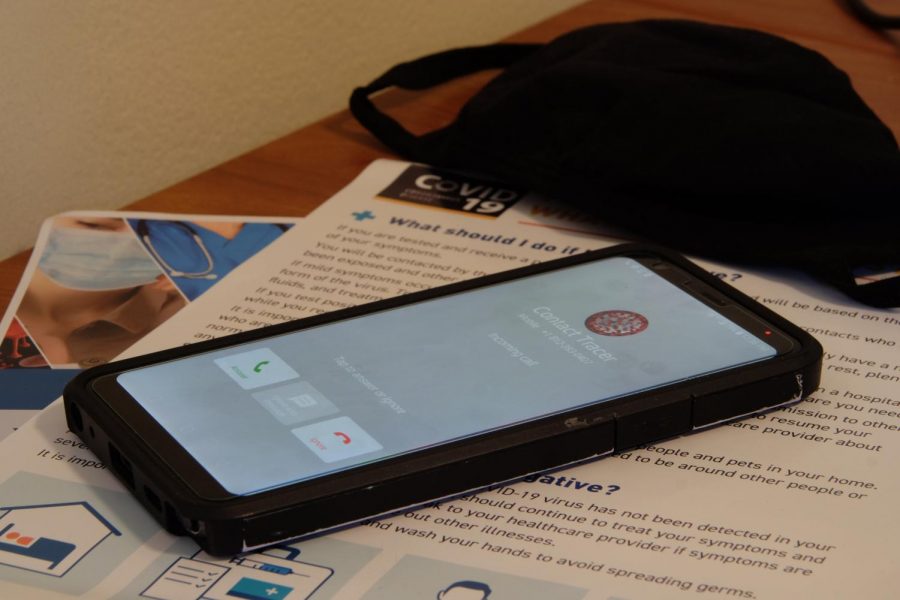Contact tracing on campus varies depending on case
January 20, 2021
Contact tracing can take between 40 minutes to four hours, depending on how many people someone who has tested positive for COVID-19 has been around.
Dean of Students, Jennifer Hammat, describes contact tracing as a way for the university and its students to know if they have come in contact with those who have tested positive for COVID-19.
If someone tests positive for COVID-19, they should first fill out a self-report sheet. Then the individual will receive a call from a “contact tracer” who will ask for their whereabouts and give the individual a date when they no longer have to self-quarantine and are able to return to school.
Professors tracking or assigning seating is another form of contact tracing.
Stephanie Walden-Schwake, associate director of Recreation Fitness and Wellness, was a contact tracer last semester.
Most contact tracers reported to Student Affairs.
“Typically [the process] starts with, if someone knows they were exposed, if they’re positive or having symptoms, the student would do the self-report form that gets to the Dean of Students Office,” Walden-Schwake said. “And then, the [DOSO] assigns those out. So, we get an email from the [DOSO] with that self-report so we can take that case. We look over what they submitted and then we give them a call to follow up and learn more about their situation.”
The contact tracers can then determine if the student needs to quarantine or isolate and for how long.
If a student had contact with students or employees, contact tracers may follow up with those people as well.
Walden-Schwake said she has been lucky with most of the cases she has overseen. They have been pretty straight forward and can take from 15-30 minutes, Walden-Schwake said. However, some cases can take up to several hours.
“Most of the students I’ve talked to have been forthcoming and they have been willing to talk,” she said.
She said she would like to remind students to follow the guidelines and avoid large groups.
“For those in quarantine or isolation, the university wants them to be okay and wants to serve them,” she said. “So when they’re in that situation, if there’s something they need, make sure to reach out to their contact tracer or the Dean of Students Office.”
Walden-Schwake said last semester was stressful enough and if students are in quarantine and isolation and are not feeling well, the university wants to be sure they have the resources they need.
“We’re only doing this to ensure we have a safer and healthier environment,” said Alex Brennan, a residential assistant on campus. “Hopefully it doesn’t last forever, but I would personally like to know if I have been put at risk via contact.”
Brennan said the idea of contact tracing is new to everybody but believes contact tracing is the best method to keep the campus safe.
“Right now, life is tough, we all miss hugging and showing affection towards those we love, but right now, in order to keep our community safe, we have to do our part,” Brennan said.







![“[title of show]” is USI’s first summer musical.](https://usishield.com/wp-content/uploads/2025/07/Title-of-Show-Cover-300x208.png)
